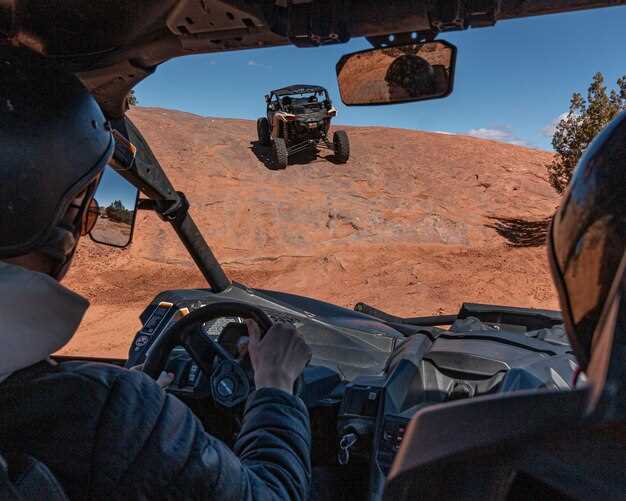Essential off-road driving techniques for Jeepers


Embarking on an off-road adventure in your Jeep can be an exhilarating experience. The rugged terrain presents unique challenges that can test both your driving skills and the capabilities of your vehicle. Whether you’re navigating steep climbs or tackling challenging descents, understanding the essential techniques of off-road driving is crucial for a successful journey.
One of the primary factors to consider when approaching any climb is momentum. Maintaining a steady speed allows your Jeep to ascend without losing traction, especially on loose or uneven surfaces. It’s vital to assess the incline and determine the best line to take. Use your vehicle’s gear ratios wisely; lower gears are best for climbing, ensuring you have the power needed to conquer steep gradients.
Descent strategies are equally important to master. When navigating downhill, the goal is to control your speed without relying heavily on brakes, which can cause skidding on slippery slopes. Engaging lower gears helps manage descent, allowing the engine to assist in braking while providing better traction. Remember, smooth movements will enhance your stability and keep the ride comfortable for both you and your passengers.
Mastering Hill Climbing Techniques for Jeep Off-Roading

When tackling steep hills in your Jeep, it’s essential to understand the fundamental techniques that ensure a safe and successful ascent. Proper planning and execution can make a significant difference in your off-road experience.
Start by evaluating the terrain. Look for the best path to the top, considering factors like steepness, loose rocks, or potential obstacles. Choose a route that provides traction and avoid steep grades that could lead to wheel slippage.
As you approach the hill, maintain a steady speed. Accelerating too quickly can result in a loss of traction, so a gradual increase in speed will allow your tires to grip the surface better. Engaging low-range gearing is advisable, as it provides more torque and control, helping you navigate through rough patches.
Positioning your Jeep correctly is also crucial. Keep your weight balanced to maintain traction on all four wheels. If your Jeep begins to tip or slide sideways, adjust your steering to regain control and avoid a roll-over.
While ascending, be prepared for the possibility of a descent. A controlled backward roll can be just as critical as climbing. Shift into low range and use engine braking to help you descend safely. This technique allows your vehicle to maintain a steady speed, reducing the risk of losing control.
Always remember the importance of communication if you’re off-roading with others. Ensure that your driving companions are aware of your movements, especially during steep hill climbs and descents. Hand signals can be especially useful when visibility is limited.
Practice makes perfect. Familiarize yourself with your Jeep’s capabilities by gradually increasing the difficulty of the hills you attempt. Each climb will teach you valuable lessons about your vehicle and your driving style, enhancing your overall skills for future off-road adventures.
Strategies for Safe and Controlled Descent in Challenging Terrain

Descending steep hills in off-road conditions requires strategic planning and execution to ensure safety and control. The first step is to engage low-range gearing in your Jeep. This provides better torque control and allows for a lower speed, which is crucial when navigating downhill.
Utilize engine braking to your advantage. By shifting to a lower gear while descending, you can harness the natural braking force of the engine. This reduces reliance on your brakes, preventing them from overheating and losing effectiveness.
Maintain a steady speed by avoiding sudden movements on the throttle or brakes. Gradual adjustments will help maintain stability and prevent the wheels from locking up or skidding. It is essential to allow your Jeep to follow the natural contours of the hill, rather than forcing it in a straight line, which can lead to loss of traction.
Additionally, carefully assess the terrain ahead. Look for potential obstacles such as rocks, ruts, or slippery spots and adjust your path accordingly. Use your peripheral vision to watch for changes in the landscape that could affect your descent.
Engage your traction control systems if equipped. These systems can assist in maintaining grip, especially on loose surfaces, while keeping the vehicle stable during the descent.
Finally, communicate with your fellow off-roaders if you are in a group. Clear hand signals or radio communication can help coordinate movements and ensure everyone is aware of the terrain conditions and descent strategies in place.
Choosing the Right Traction Aids for Off-Road Adventures
When venturing into the wild with your Jeep, selecting the appropriate traction aids is essential for navigating steep climbs and safe descents. These tools can significantly enhance your vehicle’s grip on challenging terrains, ensuring both performance and safety.
Types of Traction Aids: There are several types of traction aids to consider. Tire chains are a popular option for snowy or icy conditions, providing maximum grip. Traction mats, on the other hand, are versatile and can be used in various scenarios, offering temporary assistance on sand, mud, or loose gravel. Sand ladders are specifically designed for soft terrains, allowing vehicles stuck in sand to regain mobility effectively.
Material and Durability: The material of traction aids plays a critical role in their effectiveness. Look for heavy-duty designs made from robust materials such as reinforced rubber or metal, which can withstand the rigors of off-road use. Ensure that the aids you choose are weather-resistant and can endure different environmental conditions while maintaining their functionality.
Ease of Use: Consider how quickly you can deploy the traction aids in case of an emergency. Lightweight and compact options are preferable, as they are easier to store and install. Some products come with integrated handles or straps that facilitate quick placement under tires, a crucial factor when you’re in a tight spot on a climb or descent.
Compatibility: Make sure the traction aids you choose are compatible with your Jeep’s tire size and type. Always refer to the manufacturer’s guidelines to ensure proper fit and optimal performance during off-road activities.
In conclusion, investing in the right traction aids tailored for your specific off-road needs will enhance your adventure experience with safety and confidence. Whether you are tackling a steep climb or descending a tricky slope, having the right tools at your disposal can make all the difference.
